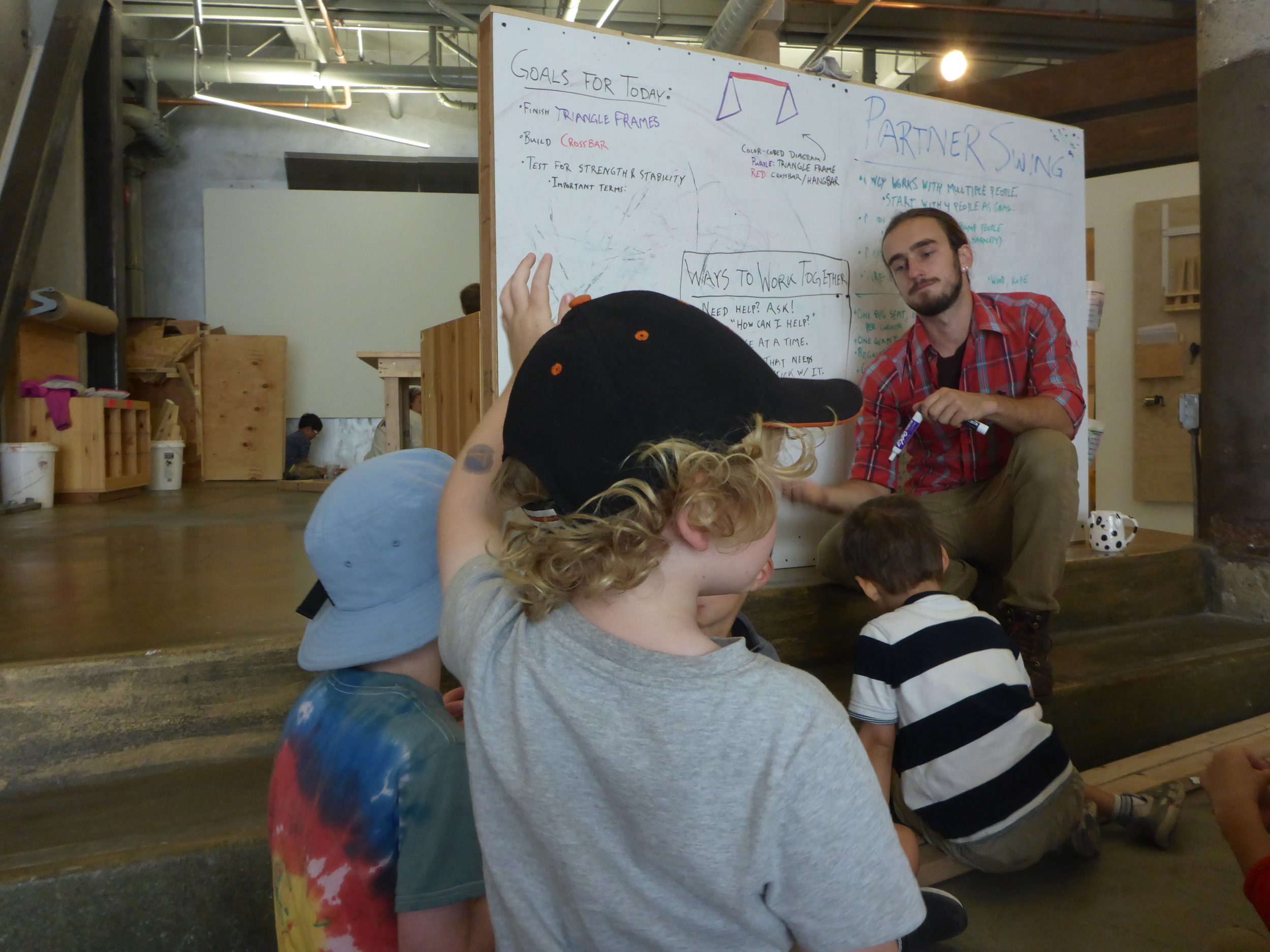Partner Playground - Day 2 - Session 4: Diving Right In
Wow! We had an incredibly productive second day. Tuesdays are always our first full day of building, and and both teams made a lot of progress.
Over at the Partner Swing team, we started our day off with a really good team meeting. We first discussed what it means to work together, and came up with some concrete ideas for how we could work effectively in a team. These included asking for help if you need it; offering help if you think you see someone who needs it; sharing ideas with one voice at a time so everyone could have a chance to be heard; finding a job that needed to be filled (not everyone can drill at the same time); and sticking with the same job for a while. These last two ideas led us to the realization that it could be really helpful to set up a job rotation system, where people sign up for certain jobs and stick with them for a while.
Next we set some goals for the day, and shared our thoughts about what we should try to do with our structure. We also drew out a color coded diagram on the whiteboard, and came up with a common vocabulary for the parts of our swing so that we could more easily talk about our structure with each other. We came up with terms like "triangle frame" and "crossbar."
Sharing important design considerations, and choosing jobs for ourselves in the job rotation schedule.
Our morning meeting did a really good job of exploring the ways in which we could collaborate well, and set us up for an excellent day of building! We made rapid progress and solved all kinds of problems togethers. Triangular frames pose interesting challenges since they tend to lack right angles, which allow rectangular pieces of wood to fit together easily.
By the end of the second build session, we had enough of a structure that we could try erecting it. Our test was incredible, specifically because it included catastrophic failure. Once we had lifted the structure upright, the crossbar detached itself from the triangle frame and was left hanging in midair from the pulley we had conscientiously used to raise it all safely. We learned that we needed to rebuild our structure to be much stronger.
The Group See Saw team started their day off with a surprisingly similar meeting, figuring out concrete ways to collaborate. Then they got straight to work designing and constructing, and quickly knocked out a 16 foot long see saw! So far the see saw seems to have enough handles to seat anywhere from 7 to 9 people at a time.
The See Saw team performed some excellent iterative building. After putting in a bunch of screws to attach plywood, they discovered that some screws had missed the 2x3 entirely!
The team also explored the nature of fulcrums and congruent triangles as applied to practical see saw design, and built a model to discover that the maximum height off the ground that a see saw rider will achieve will be twice the height of the fulcrum. This kind of modeling (stacking blocks of wood and things) is probably a process that is far older than Pythagorus, and it's amazing to see how much you can learn by participating in that kind of traditional exploration.
The maximum height of the see saw will be twice the height of the fulcrum.
































